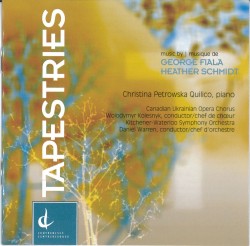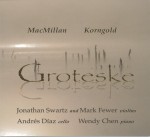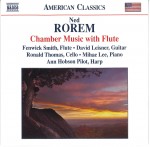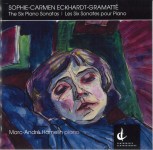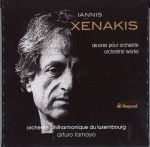 Xenakis - Orchestral Works
Xenakis - Orchestral Works
Orchestre Philharmonique du Luxembourg; Arturo Tamayo
Timpani 5C1177 (www.timpani-records.com)
Iannis Xenakis (1922-2001) was a Greek composer based in Paris, with a long relationship to Canada: four premieres and many visits going back to the 1960s. For all that, there have been just two orchestral performances in Canada. Luckily, next March Esprit Orchestra will reprise its 2006 performance of Jonchaies (1977), a major work included in this set.
Over the 40-some years of his career, Xenakis wrote 40 orchestral scores, an amazing output considering that he composed 100 or so other works as well. Until recently, few of the orchestral pieces were available on disc. Thankfully, in 2000, conductor Arturo Tamayo and the Orchestre Philharmonique du Luxembourg began recording these works for Timpani Records, a French label. Over the past decade, five discs have been released, now collected in a handy box set. Of the 23 works presented, only a few have been recorded before. The fifth disc includes Achorripsis (1957) for ensemble rather than orchestra. As it is out on disc already, one wonders why it was included. That quibble aside, this is an important collection, very well recorded and performed. Tamayo is a fine, intelligent conductor who performs a great deal of contemporary music all around Europe.
Xenakis’s seminal scores, Metastaseis (1954) and Pithoprakta (1956), have long been available on disc through reissues of early recordings. This new one is a revelation, not only for the pristine quality but for the assurance of the string players, who now very well know how to perform the glissandi, steely non-vibrato, and other extended techniques that earlier musicians struggled with. Hiketides (1964) is a little-known orchestral suite derived from incidental music for the Aeschylus tragedy The Suppliants, and is a fascinating mixture of textural music and archaic-sounding modal passages.
The majority of the works recorded for this set date from the 1980s and 1990s. Most are scored for full orchestra, although Syrmos (1959) and Shaar (1983) are for strings alone, and Akrata (1965) is for winds. Two are concertante works for piano, dazzlingly performed by the young Japanese pianist Hiroaki Ooï: Synaphaï (1969), where the piano part is infamously written on 10 staves, and Erikhthon (1974). The other work in this set featuring soloists is Aïs (1980), written for the extraordinary voice of Spyros Sakkas, jumping between baritone and falsetto. He is heard along with a solo percussion part ably performed by Béatrice Daudin. This work opens the set, and is truly evocative and emotionally gripping. The latest pieces included in the set date from 1991: Roaï, Kyania and Krinoïdi. An extraordinary year! Even more amazing is the variety of character and material between these works. While Xenakis was at that time already suffering from ill health, it certainly does not show in these forceful, sophisticated, beautiful works.
In listening through all this music, various strands of the composer’s thought and expression surface; some — like the glissando textures, the layered polyrhythms, or the modal melodies harmonized in blocks — reappear. Others appear then submerge, giving rise to new ideas. The evolution from one orchestral score to the next is quite organic, and the visceral intensity of the music remains constant. Try listening chronologically as well as following the order presented on the discs.
What is most apparent, in the end, is that all his life Xenakis drew extraordinary inspiration from the symphony orchestra. The important contribution he made to the genre can start to be understood and appreciated with this fine box set.
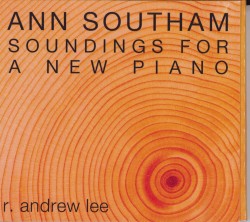 Ann Southam - Soundings for a New Piano
Ann Southam - Soundings for a New Piano

